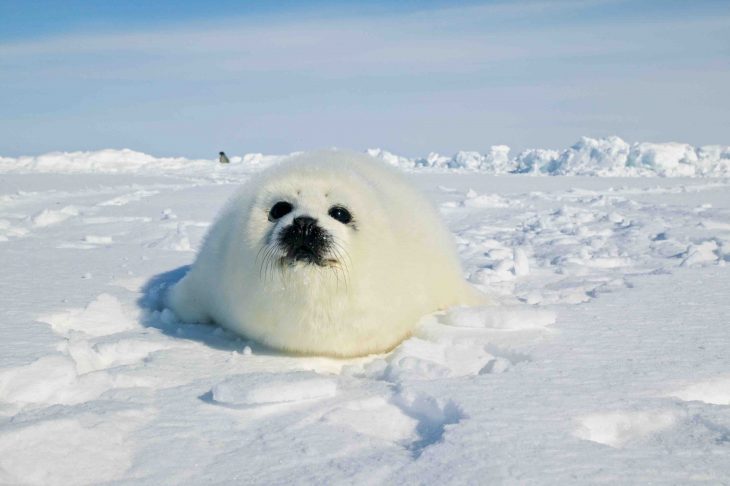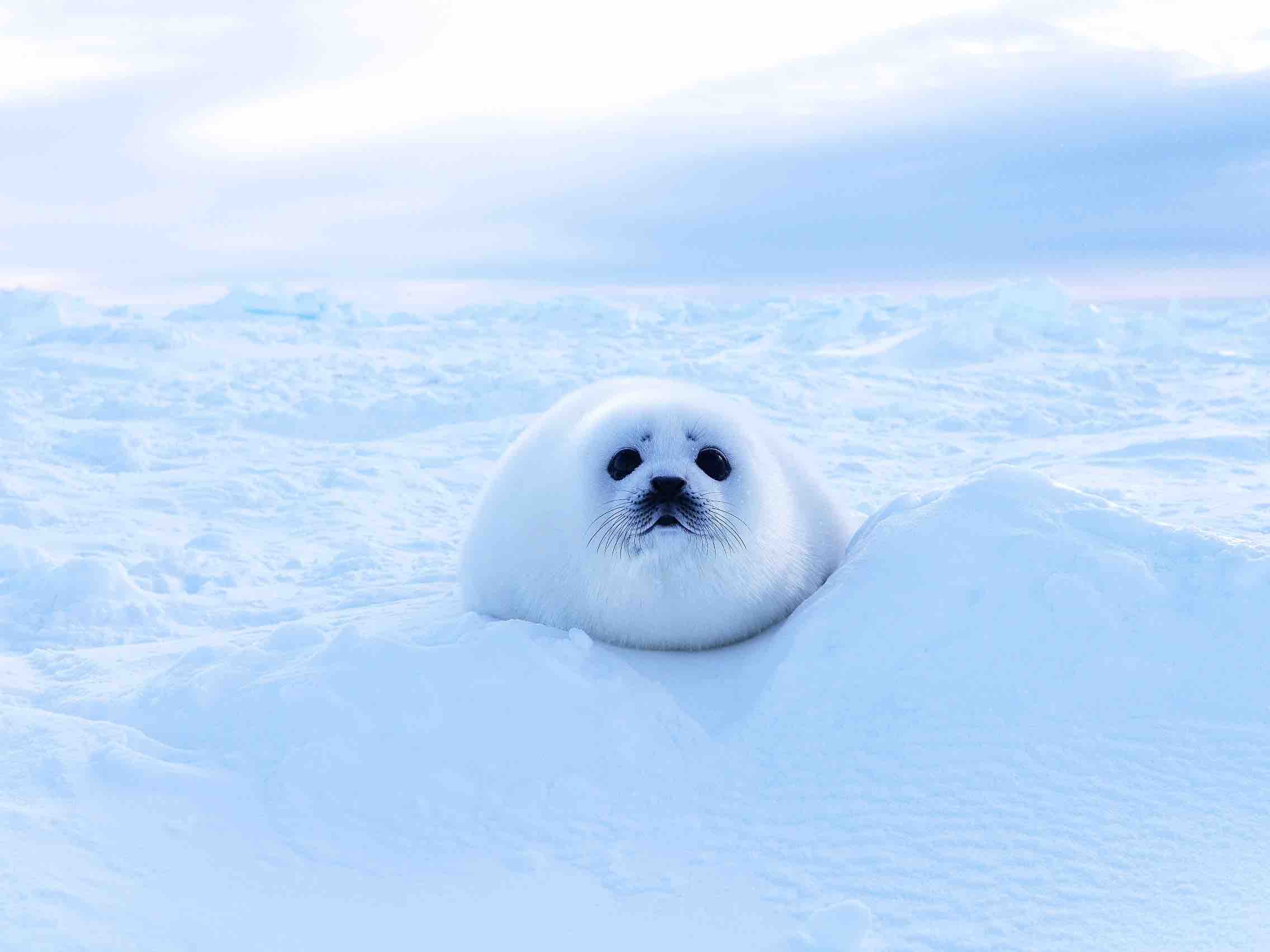
If you’re curious about marine animals, then harp seals are sure to capture your imagination. These fascinating creatures inhabit the icy waters of the Arctic and are known for their distinctive appearance and playful behavior. In this article, we will explore ten harp seal facts that will introduce you to these adorable creatures and their remarkable adaptations.
Harp Seal Pups Are Born on Ice
Harp seals give birth to their pups on floating sea ice. The ice provides a safe and stable platform for the mothers to nurse their young. After a gestation period of about 11 months, the female seals, called cows, give birth to a single pup weighing around 24-29 pounds (11-13 kilograms).
Harp Seal Pups Have a White Coat
When harp seal pups are born, they have a fluffy white coat known as a “lanugo.” This coat helps them blend in with the snow and ice, providing camouflage and protection from predators. As they grow, the lanugo coat is gradually replaced by a sleeker and more mottled coat, allowing them to blend in with their surroundings.
Harp Seals Are Excellent Swimmers
Despite their adorable appearance, harp seals are highly skilled swimmers. They have streamlined bodies and strong flippers that allow them to navigate through the frigid waters with ease. These adorable seals can swim at speeds of up to 12 miles per hour (20 kilometers per hour) and dive to depths of over 300 feet (90 meters) in search of food.
Harp Seals Feast on Fish and Invertebrates
Harp seals are carnivorous animals that primarily feed on fish and invertebrates. Their diet mainly consists of small fish like Arctic cod, herring, and capelin. They also consume crustaceans and other marine organisms found in their Arctic habitat. Their long whiskers, known as vibrissae, help them detect prey in the water.
Harp Seals Use Ice Cracks for Safety

The sea ice plays a crucial role in the lives of harp seals. They use cracks and openings in the ice, known as leads, as escape routes from predators like polar bears and killer whales. The seals can quickly dive into the water through these leads, making it challenging for their predators to reach them.
Harp Seals Are Social Animals
Harp seals are social creatures and can often be found in large groups called colonies or herds. These colonies can consist of thousands of individuals. Being in a group offers protection from predators and also provides an opportunity for social interactions and mating during the breeding season.
Harp Seals Communicate with Vocalizations
Harp seals communicate with each other using a variety of vocalizations. They produce various sounds, including barks, growls, and trills, to convey different messages such as establishing territory, attracting mates, and expressing distress. These vocalizations play an essential role in their social interactions and survival.
Harp Seals Migrate Long Distances
Harp seals are known for their impressive migratory behavior. They travel long distances to find suitable breeding and feeding grounds. During the breeding season, they migrate to the pack ice of the North Atlantic and the Arctic Ocean. In the summer, they move to colder waters in search of food.
Harp Seals Have a Unique Pattern on Their Coats
Adult harp seals have a distinct pattern on their coats, which resembles a harp or wishbone shape. This pattern gives them their common name. The unique markings help researchers identify individual seals and track their movements and population dynamics.
Harp Seals Are Protected Species
Harp seals are protected under various conservation measures to ensure their survival. Hunting regulations and bans have been put in place to prevent overexploitation. These measures aim to maintain a healthy population of harp seals and preserve the delicate balance of the Arctic ecosystem.
Conclusion
With their charming appearance and unique adaptations, harp seals are truly remarkable creatures. Their ability to thrive in the challenging Arctic environment showcases the wonders of nature. Remember these facts the next time you encounter these adorable animals in books, documentaries, or even in the wild.
Frequently Asked Questions (FAQs)
Do harp seals live in the Arctic or Antarctic?
Harp seals live in the Arctic regions, primarily in the North Atlantic and the Arctic Ocean. They are not found in the Antarctic.
What is the average lifespan of a harp seal?
Harp seals have an average lifespan of around 30 years in the wild, although some individuals have been known to live longer.
Are harp seals endangered?
Harp seals are not currently classified as endangered. However, they face threats from climate change, habitat loss, and potential disturbance from human activities.
Can you see harp seals in captivity?
Harp seals are not commonly found in captivity. Due to their specialized needs and the challenges of recreating their natural habitat, they are primarily observed in their native Arctic environment.
Are harp seals related to other seal species?
Harp seals belong to the family Phocidae, which includes various seal species. They are closely related to other Arctic seals such as ringed seals and bearded seals.
Was this page helpful?
Our commitment to delivering trustworthy and engaging content is at the heart of what we do. Each fact on our site is contributed by real users like you, bringing a wealth of diverse insights and information. To ensure the highest standards of accuracy and reliability, our dedicated editors meticulously review each submission. This process guarantees that the facts we share are not only fascinating but also credible. Trust in our commitment to quality and authenticity as you explore and learn with us.


